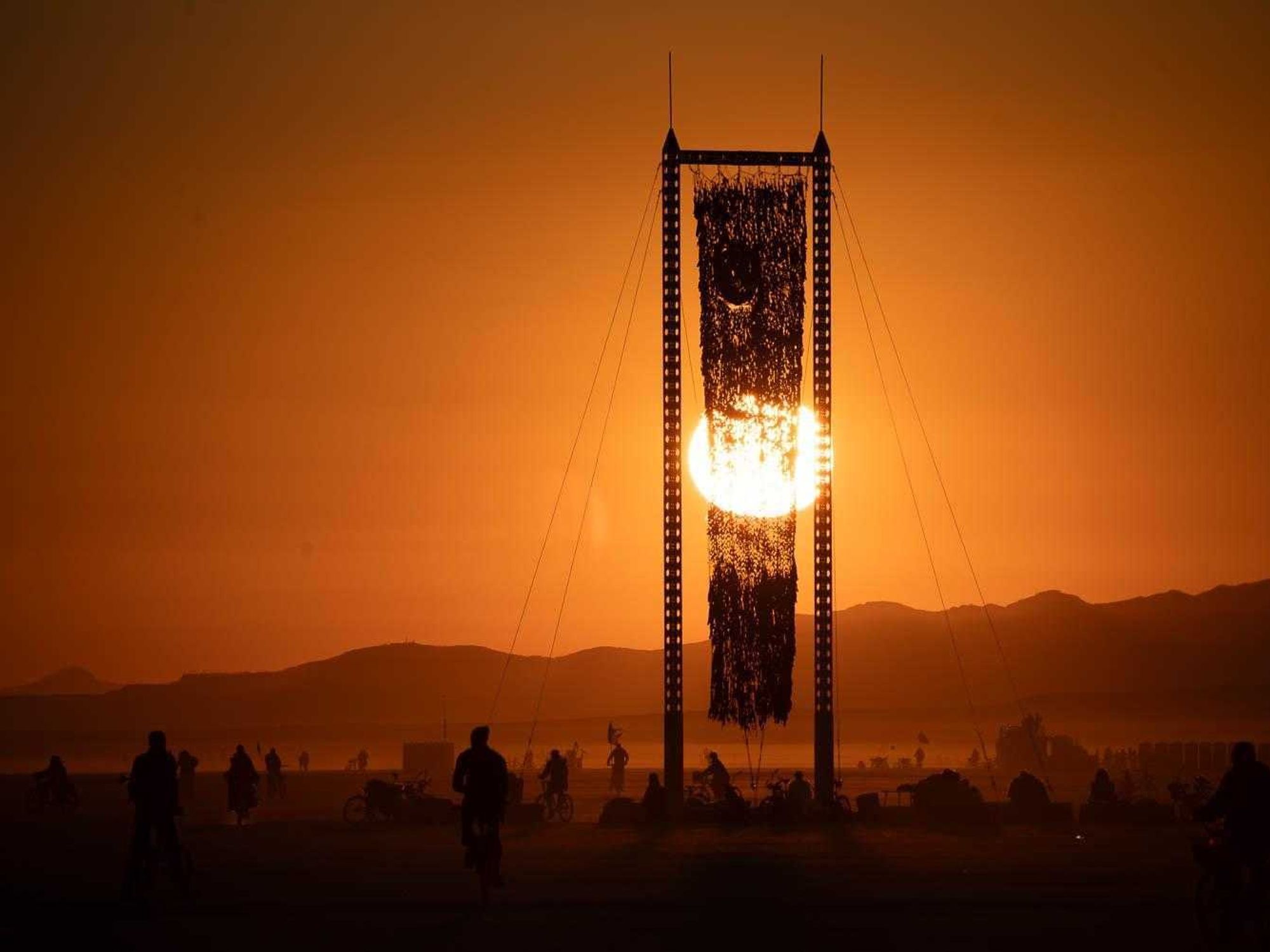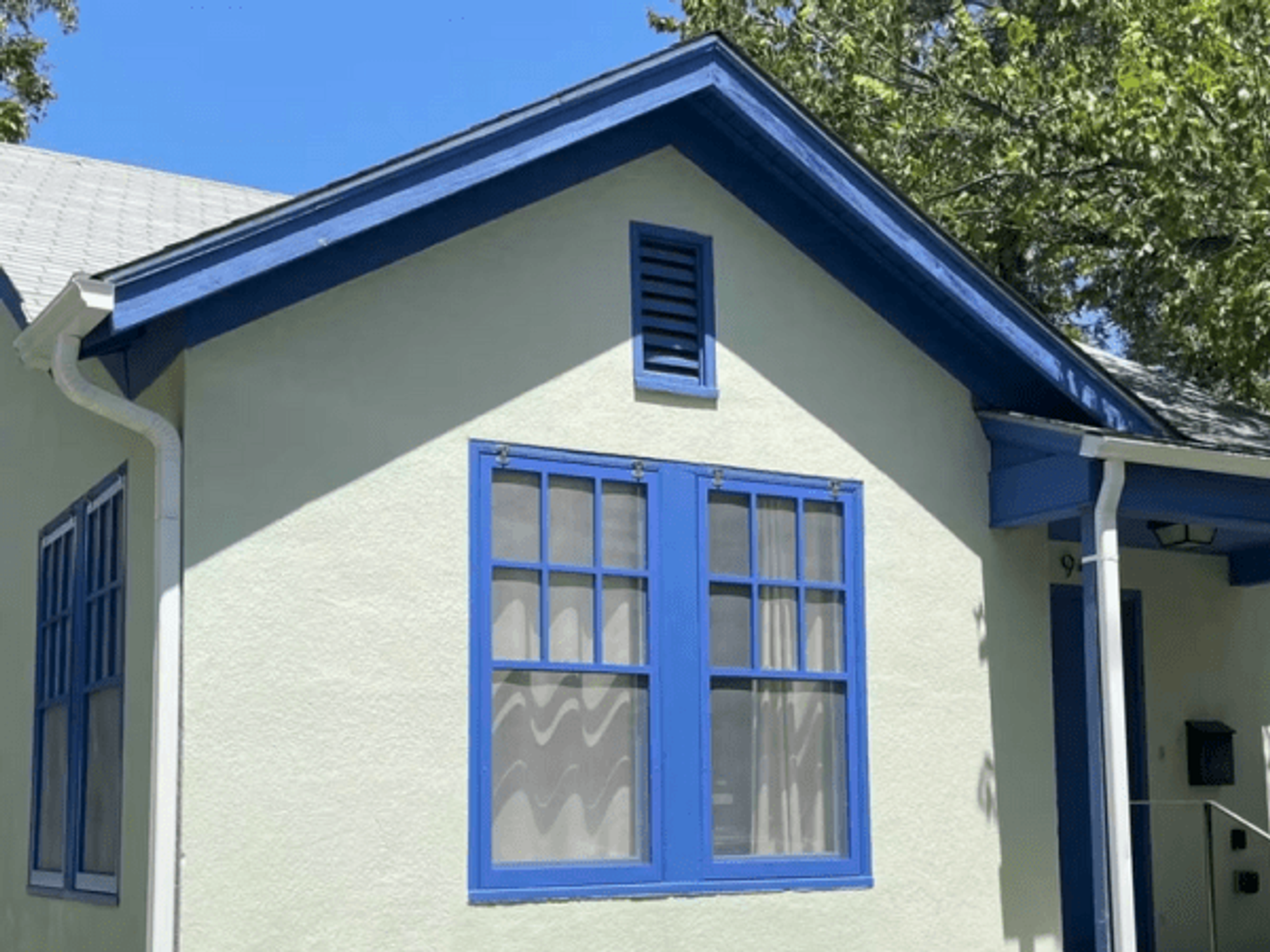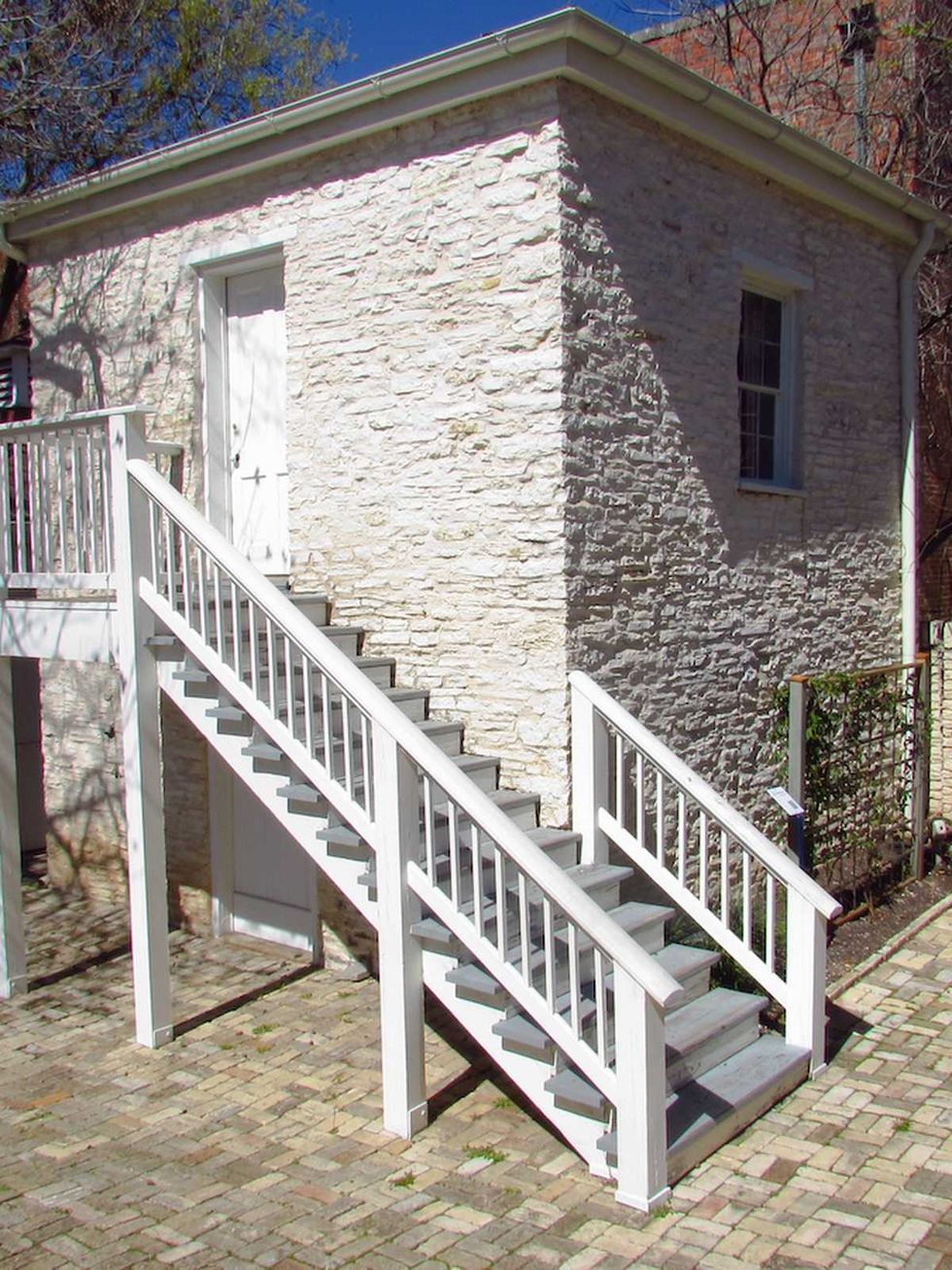Lend a Hand
Austin art collectives bring work made by 1,000 local hands to Burning Man

"1,000 Hands" represented Austin as one of the tallest structures at Burning Man 2023.
A picture may be worth a thousand words, but this textile was made by a thousand hands. That's gotta be worth something in a place like Burning Man.
In 2023, the pop-up desert city made more headlines than usual; the event was rained out and every dust-covered person, vehicle, artwork, and metaphysical idea was suddenly sunk into mud. As many revelers extended their stays to avoid a grueling trek out, DJ Diplo and comedian Chris Rock — who walked miles and then hitchhiked — were consistently cited as proof that escape was possible.
But the members of Art Island had a 56-foot tapestry to worry about. The Austin-based art troupe, known for its high production value parties with dress codes, fire performers, great DJs, and more, rigged up one of the tallest artworks at a festival already famous for oversized art.
Called "1,000 Hands" in reference to the 500 Austinites who helped dye and tie scraps of fabric in a flowing mosaic, the work became an unmissable part of the landscape. All in one main corridor were The Man (the massive effigy that serves as the visual and ideological focal point of the festival), The Temple (the main shared gathering place), and "1,000 Hands," literally lighting the way to the core of Black Rock City. The work became an orienting feature in a metropolis it's impossible to accurately map.
"Because it was so tall, and so vivid, you could see it from pretty much anywhere if you just looked up," says Art Island founder Maria Gotay, who was also one of the leading co-creators of the artwork. "It was by far the most vivid daytime art piece out there. So it really did stand out against the horizon."

"1,000 Hands" was the recipient of a prestigious Burning Man grant that goes to about 75 projects worldwide each year, by Gotay's estimation. Its other main co-creator, Nic DeBruyne of Wevolve Labs, had designed a previous Honorarium grant recipient — a winged kinetic light sculpture — and the two had worked together on a different, self-funded project. Materials lead Morgan Baker and tech lead Janitha Karunaratne rounded out the materials leadership team.
The vision was to create a visual representation of climate change using the work of many community members, effectively asserting that the global issue needs to be dealt with collaboratively, rather than by acts of individual genius. An image of a sunset fits right in at Burning Man, but there was some symbolism in the way the colors changed from cool purples and blues to a hot red at the top. Visitors to the work could also swing on it to invite engagement. The piece's website explains the following:
"Participants can swing from handles at the base of the tapestry, feeling "the world on their shoulders," while witnessing the ripple effect of their actions displayed on a monumental scale. Only when participants swing in synchronicity will the piece move forward and gain speed and traction."
Similarly, the piece came together not when the image did, but when its makers did. Art Island and Wevolve held weekly work sessions in Lloyd The Warehouse, the main workspace for Burning Flipside, the regional burn held annually in Central Texas. Since it was the smaller festival's off-season, the co-creators were able to leave the giant work set up between sessions.
Community members — many of them frequent collaborators or admirers of Art Island — stopped by to help tie pieces of upcycled and new fabric on, and the team leaders organized community time outside of the warehouse to invite in even more Austinites who may not be in touch with the counterculture at all.
"1,000 Hands" made appearances at community spaces like museums, and everyone from burners to children made contributions. Even partiers who never saw the work supported it via ticket sales for a Burning Man-themed party called "In Dust We Trust," at an eclectic East Austin venue.

"We kind of formed a community while creating the piece with the 500 people that worked on it," says Gotay. "We had these work nights where we saw the same volunteers coming back, and they wanted to get involved in the new direction or the new color we're working with — they were really invested in seeing the piece grow, and we got invested in our friendships with all these folks that we didn't know before."
On The Playa, basically the grounds of Black Rock City, wanderers became part of the collaborative community by interacting with the piece. Sometimes the creative team would stop by to check on the work and find a gathering of strangers. There were weddings and DJ sets, including a performance by Italian DJ Deborah De Luca.
Since the piece was designed to bear hanging people and leave no trace in the desert, it held up well to the elements. It did not touch the ground, so the rain actually cleaned it and no mud was left on the fabric. It even got packed up on schedule. The team needs to make a few repairs, but overall the piece remains intact. It will travel to some upcoming festivals, especially during the upcoming eclipse in October, and then the team hopes that media attention will find it a permanent home.
Although nearly anyone could relate to the climate change angle (given that their current beliefs allow it, anyway), Gotay sees a distinctly Austin spirit in the work.
"I feel like only in Austin would this ever happen so casually," she says. "We just took over Morgan's backyard ... banging out tie dye pretty much all summer. So that's one element. And ... I've just found that Austin is the most open and welcoming community to people in the arts. And there's so many folks here that want to be a part of something."

More information about "1,000 Hands" is available at 1000handsart.com. Follow the next steps for the project and see more angles on Instagram.

 The Neill-Cochran House Museum's mid-19th-century slave quarters received Planning and Historic Designation grant support for restoration and historical interpretation.Photo courtesy of Preservation Austin
The Neill-Cochran House Museum's mid-19th-century slave quarters received Planning and Historic Designation grant support for restoration and historical interpretation.Photo courtesy of Preservation Austin Built around 1863, the Henry G. Madison cabin in Rosewood Park received Bricks and Mortar grant support for preservation planning work.Photo courtesy of Preservation Austin
Built around 1863, the Henry G. Madison cabin in Rosewood Park received Bricks and Mortar grant support for preservation planning work.Photo courtesy of Preservation Austin